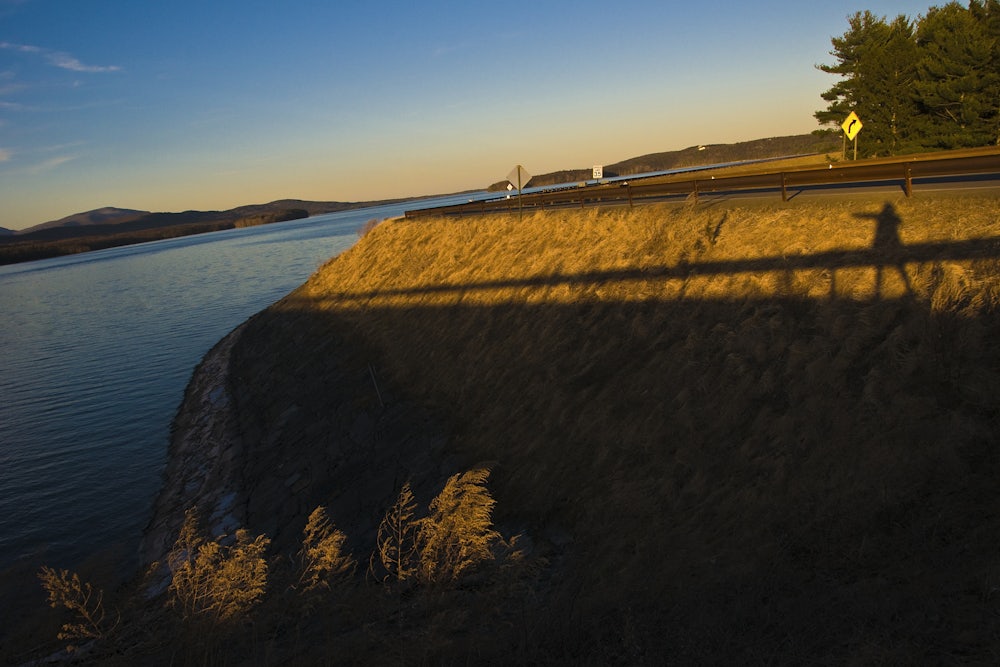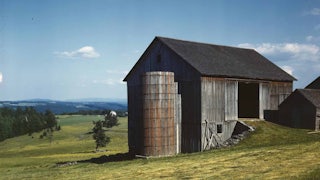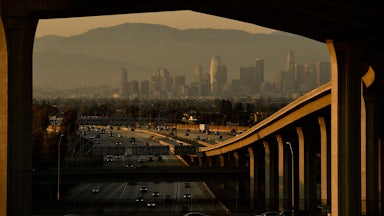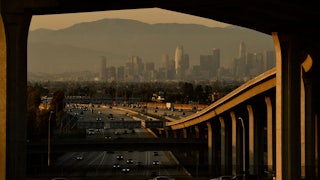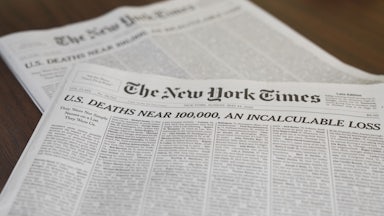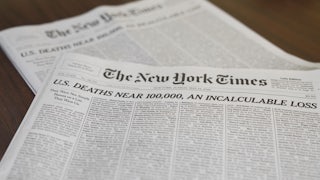One of the ways New York City set itself apart from the rest of the world as an economic capital in the twentieth century was by setting itself apart from its water supply. Proximity to fresh water is an age-old problem for human settlements; as cities consume, they (sorry) excrete things too—cumulatively, in the form of sewage and solid waste, which taint that most sensitive local resource, water. The famous first water source for lower Manhattan’s Dutch and English colonists was the Collect Pond, funky by the end of the eighteenth century (“a common sewer,” said a resident). Aaron Burr owned a reservoir downtown, which he ran as a subscription service for the wealthy, though the project fell to the wayside as his affiliated corporation, Chase Bank, increased Burr’s cashflow. The city’s growth demanded water from elsewhere.
Lucy Sante’s book, Nineteen Reservoirs: On Their Creation and the Promise of Water, begins with the first big siphoning of waters outside of city bounds, the Croton reservoir system, created by flooding what had been, in the words of one visitor at the time, “a remarkably healthful region.” The surveyor on the project believed the water supply would be “inexhaustible,” but the more water New Yorkers got, the more they consumed. (One culprit: the flushing toilet, implemented shortly after the Croton system’s 1842 opening; even though sewage systems weren’t implemented for a decade, wealthy homes flushed anyway.) By 1868, New York was consuming 124 gallons of water per day person, compared to London’s 42. Politicians debated, then discarded, the idea of metering water use and instead just built more reservoirs, farther north in the Catskill Mountains—which meant flooding even more land to the north, moving more farms and lives.
Having lived for decades in the reservoir zone, Sante aims “to give an account of the human costs, an overview of the trade-offs, a summary of unintended consequences.” In contrast to the more exhaustive accounts of the system, like David Soll’s Empire of Water and Diane Galusha’s Liquid Assets, Nineteen Reservoirs—begun during the 2020 lockdown as a series of pieces for Places Journal—is a meditation, a forensic accounting of the damage the reservoir system did and how it still resonates. Sante is expert in the excavation of neglected and buried histories: Her books Low Life, a survey of the fabric of turn-of-the-century New York, and Evidence, an examination of the tragically banal crime scene photos made in New York between 1914 and 1918, make her the ideal archaeologist of the hidden thefts and forgotten land grabs in the hills north of New York City.
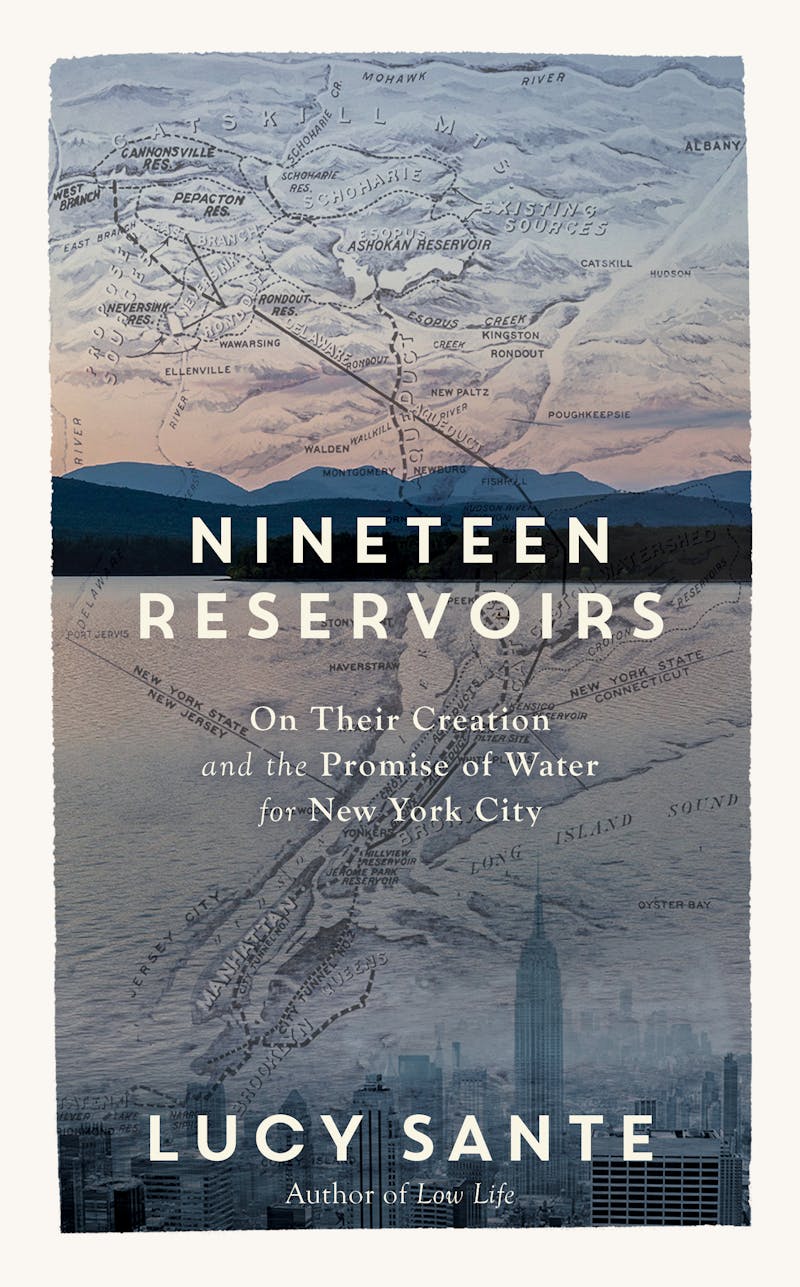
And as the book traces New York’s relentless pursuit of water, it’s also a reminder of the fragility of that infrastructure. The city may not always be able to rely on the lands to its north for its needs. “New York, like other cities, is filled with people who have no idea where their water comes from and are only occasionally made aware that it is a precious and very finite resource that will become scarce again one day—perhaps quite soon,” Sante writes. “By then, there will be no untapped mountain valleys to draw from.”
The reservoir system is nothing if not a font of statistics: one billion gallons a day, collected in a basin the size of the state of Delaware, piped through the longest underground tunnel in the world. An inventor, mining engineer, and Jersey Shore businessman named R.D.A. Parrot sketched out the Catskills plan in an 1889 Scientific American article, estimating that the reservoirs would send the city, he wrote, “anywhere from 300 to 450 million gallons a day.” While he cautioned that the use of eminent domain could look like “the scepter of oligarchy,” he concluded that New York’s water needs outweighed the lesser needs of Catskills residents. He argued that, in fact, the plan would ultimately benefit the rural areas, given the good the city would bring. “It is assumed as a generally admitted fact that New York City exerts a positive influence of growth on the surrounding territory.” The city’s business interests liked the plan, seeing the importation of upstate water as allied with economic growth: Dry goods risked fire, and fire hoses required good pressure. John Freeman, one of the engineers of the new reservoir system, used to say that engineering was his avocation, insurance his vocation.
The Catskills project started with a one-by-12-mile-long strip of land, 8,300 acres, encompassing the villages of West Hurley, Glenford, Ashton, Olive Branch, Shokan, West Shokan, Boiceville, Brodhead’s Bridge, Olive City, Olive Bridge, and Browns Station. In its first gulp, Sante writes, New York City seized “504 private houses, 35 stores, 10 churches, 10 schools, nine blacksmiths shops, 7 sawmills, and a gristmill.” It also took the Ulster and Delaware Railroad and state forest preserves, thanks to the McClellan Act of 1905, named for George McClellan, then the conservative Democratic mayor of New York. As many have over the years, Charles Coutant, an Ulster County state assemblyman, argued the city could take its water from the Hudson (like Albany) and spend the money on filtering. He chided neighboring counties for supporting New York: “If Ulster county is sacrificed,” he reminded them, “your turn may come next.”
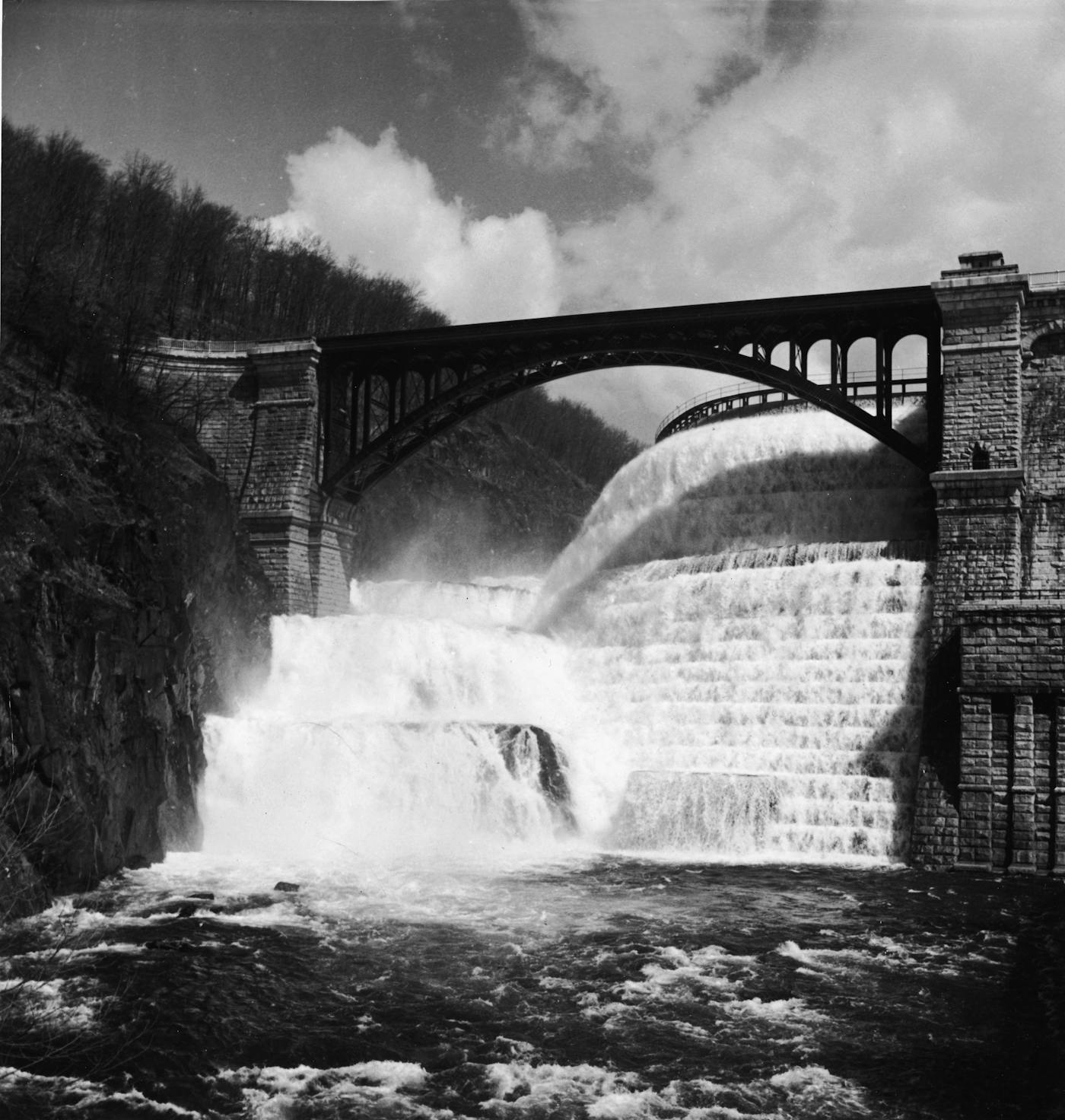
But condemnations were proceeding
at a rapid clip by 1907, with land seized just before it was flooded. Sante notes the tone
of condescension with which The New York Times covered the farmers’ claims,
framing their requests for compensation—for rabbits, for a cow that ate some
dynamite—as “rustically comical.” “But, of course,” Sante writes, “each
condemnation revealed a small, specific narrative.” Sante recreates the world
of the “small shopkeepers, boardinghouse keepers, millers and blacksmiths and
quarrymen, ministers and schoolteachers” whose lives were broken apart by the land
seizures. Their homes destroyed, they were displaced along with their neighbors,
an example of what the social psychiatrist Mindy Fullilove, writing about 1950s
neighborhood-destroying urban renewal in the Journal of Urban Health, in
2001, defined as “root shock,” a traumatic stress reaction related to the
destruction of one’s emotional ecosystem, though in this case in the
countryside. Sante writes:
Their connection to the world beyond their own fence lines was, at best, the daily newspaper; few had telephones. The trip to Kingston, no more than ten miles away, was undertaken by most maybe a couple times of year. They spent very little money, consuming mostly things they cultivated themselves or bartered with a neighbor. But they weren’t isolated; dense family ties spread across the region, and neighbors had been the same for decades. They were bonded and pledged and sealed to the land.
Sante sketches the life of a farmer named Charles Pierson: a bachelor at 52, whose farm was ideally situated, whose family was nearby, who hired hands from the area at harvest time. He disappears from the record once the city takes his farm. “There are no accounts of illnesses or deaths, emotional crises or suicides following the land seizures, and the term ‘post-traumatic stress disorder’ was decades from being coined,” writes Sante. “But such sufferings must surely have been common. Each determination by the condemnation commission in effect dismantled a life—and at a cut rate.”
As the Ashokan’s status shifts from engineering marvel to inadequate first step, the workers come and go and also die, based in camps that, like the settlements that were flooded over, are gone—town-size rows of shacks, temporarily home to Italian and Eastern European immigrants, African Americans and Native Americans shipped in from as far away as Philadelphia and Buffalo and patrolled by a police force run by the city’s Board of Water, the remnant of which is the city’s DEP police force that patrols the reservoir areas today, restricting remaining residents from anything detrimental to city water. The Kingston Daily Freeman covered any accidents (“sometimes in grizzly detail”) but mostly referred to the workers as if they were foreign bodies, or invasive species, the emphasis on illegality. “By and large, however, its focus was on the legal and financial machinations of the project.”
In June 1916, New York City approved the Gilboa Dam, due north of the Ashokan, on Schoharie Creek, a project that required turning the Schoharie south, through an 18-mile-long rock-dug tunnel. The 500 residents of what was Gilboa and vicinity moved elsewhere, taking their ancestors’ graves with them. At this point, the city had established its modus operandi, which Sante describes in her taut prose: “three-man panels, relentless lowballing, dismissals of many claims for damages and loss of business.” And then reservoirs were constructed to the west—the Roundout and Neversink, opened in 1950 and 1954, and the Pepacton and Cannonsville, opened in 1955 and 1964, a half-century after the whole project’s start. These last four tapped the Delaware River watershed and thus entangled New York with New Jersey and Pennsylvania. As New York’s water consumption continued to increase, fees were debated mostly in dry times, like the 1948 drought, when they were rejected by landlords who feared tenants might use control of their taps as a weapon to control rents. “But after the rains came and raised the reservoir levels, the project evaporated,” Sante writes.
Over the years, upstate residents got better at getting payments, while the city got better at ignoring upstate. In 1957, the Times scoffed at residents looking for compensation for “esthetic values,” chiding “dairy county legislators” and, as a defense, pointing out how little city residents get when they are moved for “slum clearance.” “Generous treatment of the Mountain Valley folk was forced upon the big city by upstate legislators,” the Times wrote. When a homeowner protesting the Rondout Reservoir was excoriated by a judge for bringing “hate” to the proceedings, the Binghamton Press corrected him: “The hate for the city was already there.” The reservoir system, Sante writes, “represents at best an imposition” on the people of upstate New York “and at worst an imperial pillage of the landscape.”
Today, you would be hard pressed to
find a New Yorker convinced that their empire of reservoirs—a land clearance
project that began as Andrew Jackson was wrapping up his land removal policies—is
anything but anodyne, even if some of its engineers designed some of the Western
water projects that also relied on land cleared of the local populations. One
of the four engineers of the Catskills system, John Freeman, designed the Hetch
Hetchy Dam, San Francisco’s reservoir in Yosemite, as well as the L.A. aqueduct,
which took back lands that Congress had set aside for Owens Valley
tribes.
The early trade-offs involved with removing upstate populations are summarized by Sante as a version of the Trolley Problem, an ethical dilemma wherein the person operating a switching mechanism sees a runaway train coming, then diverts it from the track with five people tied to the track to the track with one. “New York City had no real choice,” Sante writes. In order to sustain its growing population, it needed water from somewhere. But today, the fact that the Delaware water basin supplies drinking water to 12 million people outside New York in addition to eight million New Yorkers changes the calculation.
In Empire of Water, David Soll argued that “the construction of the city’s water system reconfigured the natural and built environment of southeastern New York State,” not to mention that of Eastern Pennsylvania and Northern New Jersey: The lives of trout, in addition to less sexy species, are tied to New York City’s toilets, as are river levels during upstate floods. Droughts over the years have threatened the water supply of Philadelphia, and New York has been forced by courts to release water from its Delaware reservoirs to prevent the river’s salt line from creeping upstream to Philadelphia’s intake pipes. In dry times, the reservoirs are like hoarders. “A paradox of the water supply situation is that the water stored in the upstate reservoirs is above normal—even by pre-drought standards—for this time of year,” said New York’s water commissioner, during a drought in 1965.
Muddying the ethical hypothetical too is the warming climate. Reservoirs in the Northeast face more severe storms and warmer waters, the former increasing the likelihood of turbidity, the later the likelihood of cyanobacteria, both potentially necessitating the kind of multibillion-dollar filtration that New York has preferred to avoid by buying upstate watersheds. And when it comes to the warming climate’s impact, the track switcher must account for the fact that the wealthiest areas of the wealthiest cities, despite clean water in their faucets and emissions-free cars, have an outsize effect: The richest 10 percent of the world’s population, according to a 2021 Oxfam report, is responsible for half the world’s carbon emissions. New York is home to more millionaires than anywhere in the world, some of that wealth, post pandemic, now buying and building in the very areas that rural residents are having trouble affording, given the reservoirs’ restrictions on development. Only after years of negotiations can residents, some of whom still remember being moved, row (with city permits) boats on the reservoirs—to paddle, as Sante says, on “vast acreages of still water their ancestors never knew.”
When you are out on the reservoirs, they feel both gorgeous and strange. “Is it because we know the reservoirs are artificial that their very beauty can appear confected?” Sante asks. Or is it because they are akin to wounds, the crystal clear water bodies like silent witnesses to a still resonating crime?
